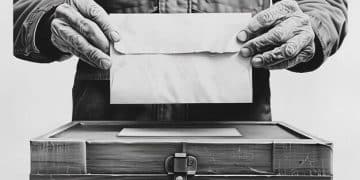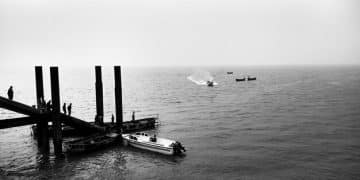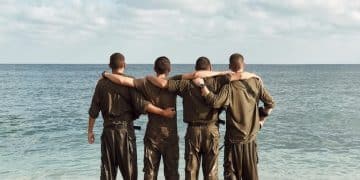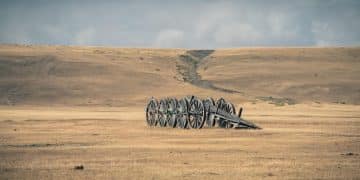The Battle of Midway: Codebreaking’s Pivotal Role in the Pacific War
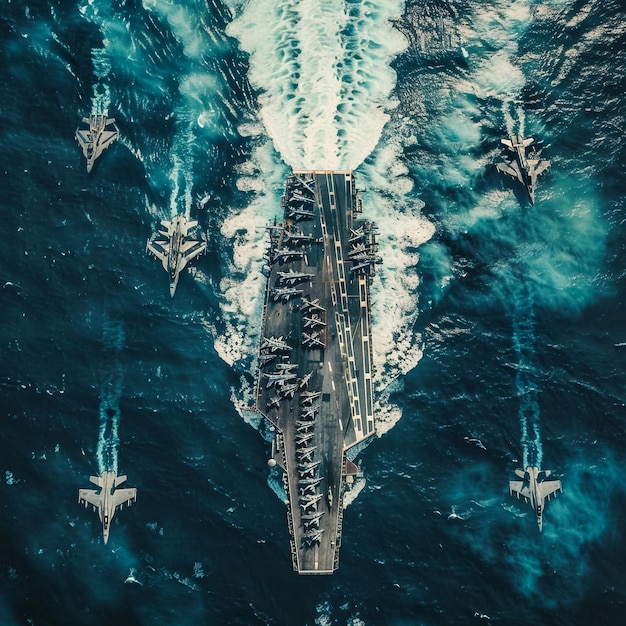
The Battle of Midway, a crucial naval engagement in World War II, saw the US Navy decisively defeat the Imperial Japanese Navy, a victory significantly influenced by American codebreakers who deciphered Japanese naval codes, revealing their plans and force disposition.
The Pacific War raged, and the United States teetered on the brink. But amidst the chaos, a small group of codebreakers held the key to turning the tide. Their efforts culminated in a stunning victory at the Battle of Midway: How Codebreaking Turned the Tide of the Pacific War, forever altering the course of World War II.
Prelude to Midway: A Clash of Empires
In the wake of the attack on Pearl Harbor, the Imperial Japanese Navy (IJN) enjoyed a period of unparalleled success. Conquests across Southeast Asia and the Pacific brought them closer to their ultimate goal: establishing a dominant sphere of influence. However, the United States, though reeling, was far from defeated. A critical element in the brewing conflict was unseen: the silent war of codebreaking.
The Japanese Offensive: Aims and Strategy
The IJN’s strategy centered on a decisive blow against the remaining US naval forces in the Pacific. Admiral Isoroku Yamamoto, the mastermind behind Pearl Harbor, envisioned luring the US fleet into a trap at Midway Island, a tiny atoll of strategic importance due to its airfield.
- Neutralize the US Pacific Fleet further to secure Japan’s expansion
- Occupy Midway Island to extend Japan’s defensive perimeter
- Force the US to negotiate a peace treaty favorable to Japan
Yamamoto believed that by capturing Midway, he could draw out the American carriers and destroy them in a final, crushing battle. What he didn’t know was that the Americans were reading his mail.
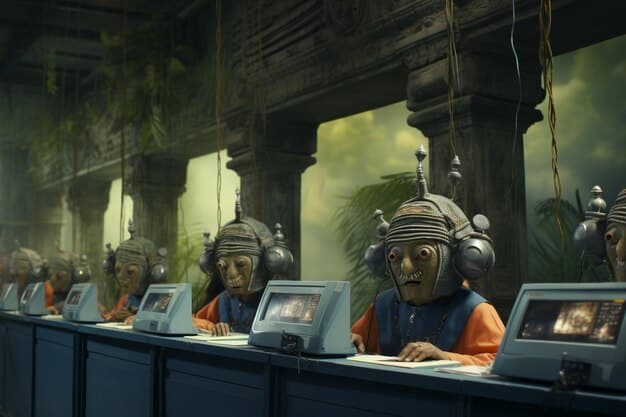
The stage was set for a monumental clash, but the balance of power was about to be disrupted by the unsung heroes of the war: the codebreakers.
Codebreaking Breakthrough: Cracking the Japanese Naval Codes
Prior to the Battle of Midway, the US Navy had been engaged in an intense effort to decipher Japanese naval codes. This painstaking work, conducted in secret facilities, would prove to be the key to victory.
‘Magic’ and JN-25: The American Advantage
The primary Japanese naval code, known as JN-25 to the Americans (and “Magic” in broader intelligence circles), was a complex system involving both codebooks and encipherment. The codebreakers at Station HYPO in Pearl Harbor, led by Commander Joseph Rochefort and his team, had made significant inroads into JN-25.
- Systematic analysis of intercepted messages
- Reconstruction of codebooks and cipher systems
- Collaboration with linguists and cryptanalysts
By painstakingly piecing together fragments of information, the team managed to decipher enough of the code to understand the broad outlines of the Japanese plan. However, there was still a critical piece missing: the target of the upcoming offensive.
Through clever deduction and a daring gambit, the codebreakers were able to confirm that “AF” in the intercepted messages referred to Midway Island. This crucial information was then passed on to Admiral Chester Nimitz, commander of the Pacific Fleet.
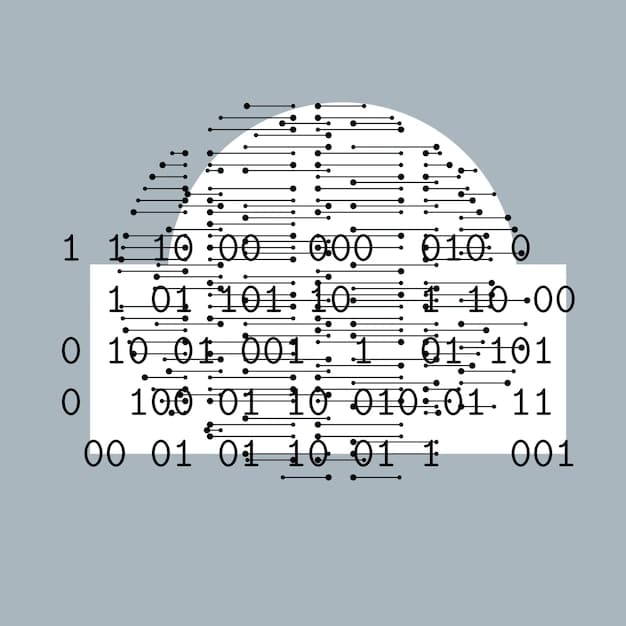
The Battle Commences: An Ambush at Sea
With the knowledge gained from codebreaking, Admiral Nimitz was able to set a trap of his own. He positioned the American carriers Yorktown, Enterprise, and Hornet northeast of Midway, ready to ambush the Japanese fleet.
June 4, 1942: The Tide Turns
On the morning of June 4, 1942, the Battle of Midway began. Japanese aircraft launched an attack on Midway Island, while the American carriers remained hidden, waiting for the opportune moment to strike.
- American dive bombers attack the Japanese carriers during refueling
- The Yorktown is damaged but remains afloat
- Japanese losses are devastating: four fleet carriers sunk
Thanks to the intelligence provided by the codebreakers, the American dive bombers were able to exploit a critical weakness in the Japanese defenses. As the Japanese were preparing to launch a second wave of attacks on Midway, the American dive bombers arrived virtually unopposed, sinking three of the four Japanese fleet carriers. A fourth carrier was sunk later that day.
During the battle, the codebreakers continued to provide vital information, helping the Americans anticipate Japanese movements and tactics. Their contributions were instrumental in securing the victory.
Consequences and Impact: The Pacific War Transformed
The Battle of Midway was a turning point in the Pacific War. The loss of four fleet carriers crippled the Imperial Japanese Navy and shifted the strategic initiative to the United States.
Strategic Shift: From Defense to Offense
The victory at Midway allowed the United States to transition from a defensive posture to an offensive one. American forces were able to launch counteroffensives, island hopping towards Japan.
- Guadalcanal Campaign begins the shift to offensive warfare
- Japan’s industrial and military capacity is stretched
- Allied forces gain control of vital strategic locations
The impact of codebreaking extended beyond the immediate tactical advantages gained at Midway. It demonstrated the importance of intelligence in modern warfare and paved the way for future successes in the Pacific.
The Battle of Midway stands as a testament to the courage and skill of the American sailors and aviators who fought there, and the indispensable role of the codebreakers who made their victory possible.
The Legacy of Codebreaking: Shaping Modern Intelligence
The success of codebreaking at Midway had a lasting impact on the development of modern intelligence gathering and analysis. It underscored the significance of signals intelligence (SIGINT) and the need for dedicated resources.
Post-War Development: Strengthening Intelligence Capabilities
Following World War II, the United States invested heavily in expanding its intelligence capabilities, including codebreaking and signals intelligence. Organizations like the National Security Agency (NSA) were created.
- Development of advanced encryption and decryption technologies
- Global network of listening posts and intelligence gathering
- Focus on data analysis and prediction
The lessons learned at Midway continue to inform intelligence practices today. The ability to gather and analyze information quickly and effectively remains a critical element of national security.
The codebreakers of World War II were pioneers in a field that continues to evolve and adapt to new technologies and challenges.
Remembering Midway: Honor and Sacrifice
The Battle of Midway is remembered as a pivotal moment in American history. It is a story of courage, sacrifice, and the triumph of ingenuity over adversity.
Memorials and Remembrance: Keeping the Memory Alive
Memorials and museums dedicated to the Battle of Midway serve as reminders of the sacrifices made by those who fought there. These sites offer a valuable opportunity to learn about the battle and its significance.
- The USS Yorktown (CV-10) at Patriots Point, SC
- The National Museum of the Pacific War in Fredericksburg, TX
- Various documentaries and books chronicling the battle
The story of the Battle of Midway continues to inspire and educate. It reminds us of the importance of vigilance, innovation, and the unwavering commitment of those who defend our freedom.
The legacy of Midway lives on, reminding us of the price of freedom and the importance of remembering those who fought to secure it.
Conclusion
The Battle of Midway: How Codebreaking Turned the Tide of the Pacific War represents a high point in the history of naval warfare and intelligence gathering. The unsung heroes of Station HYPO not only provided the tactical advantage needed for a decisive victory but also demonstrated the profound strategic implications of codebreaking. As we reflect on the battle’s legacy, it is essential to remember the courage and skill of those who fought, the ingenuity of the codebreakers, and the enduring lessons of Midway: that information is victory, and that even the smallest contributions can alter the course of history.
| Key Point | Brief Description |
|---|---|
| 🔑 Codebreaking | US Navy deciphered Japanese codes, revealing their plans. |
| 🎯 Midway | Strategic location targeted by Japan to lure US forces. |
| 💥 Turning Point | US victory shifted the balance of power in the Pacific. |
| 🚢 Carrier Losses | Japan’s loss of four carriers crippled their naval capabilities. |
Frequently Asked Questions
▼
The primary Japanese naval code was known as JN-25 to the Americans, which involved both codebooks and encipherment for secure communication.
▼
Codebreaking enabled the US Navy to anticipate Japanese movements, tactics, and target Midway, allowing them to set up a successful ambush.
▼
Commander Joseph Rochefort led the team at Station HYPO in Pearl Harbor, overseeing the analysis and decryption of Japanese naval codes.
▼
Identifying “AF” as Midway Island was crucial as it confirmed the target of the Japanese offensive, allowing the US Navy to prepare effectively.
▼
The Battle of Midway marked a turning point, shifting the strategic initiative to the US, enabling them to launch counteroffensives and advance towards Japan.
Conclusion
In retrospect, the Battle of Midway was not just a military victory, but a triumph of intelligence, ingenuity, and the unwavering dedication of codebreakers and military personnel alike. This pivotal event reshaped the Pacific War and continues to serve as a testament to the power of information in shaping the course of history.
